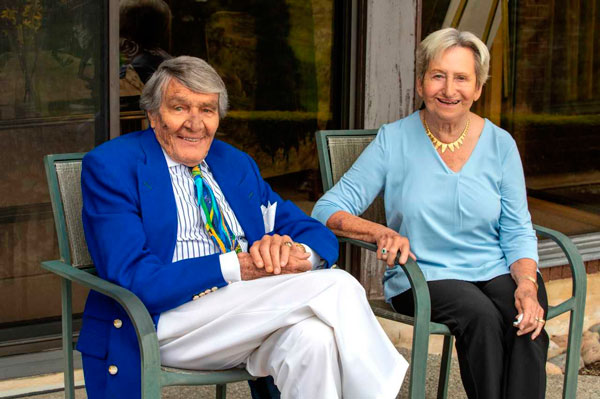
How a Hamilton philanthropist went from living without heat and running water in P.A.’s Great Depression era to leaving a legacy on the future of healthcare
Charles Juravinski moved away from Prince Albert shortly after the Great Depression: “Everybody was dead poor. There was poverty all over the place.”
As a result, Juravinski and his family moved to Hamilton, Ontario where there were plenty of industrial job opportunities with the breakout of the Second World War. He became a successful businessman and decided he needed to give back.
On Wednesday, the 89-year-old philanthropist announced him and his wife were leaving the bulk of their estate to provide an over $100-million endowment for healthcare research in Hamilton.
“As a couple, our most important lesson has been this: the greatest pleasure in life and the most powerful force for good in the world is sharing,” said the Juravinskis in a letter they released online.
“It is like a drug. It makes you feel good,” said Charles.
The money will create the Juravinski Research Centre, which will support Hamilton Health Sciences, McMaster University and St. Joseph’s Healthcare Hamilton. It funds research in several areas including cancer, mental health and respiratory and lung care.
The fund is “one of Canada’s largest legacy gifts,” according to a news release.
It will give each organization up to $5 million every year in perpetuity.
The Juravinskis have a history of supporting education, healthcare and research in their community, donating $50 million before.
The two decided to support healthcare when they sold their racetrack business—Flamboro Downs—in the early 2000s, which they managed for 27 years. Previously, Charles owned a gas station and a development company.
The money was previously foreign to them with Charles born in the midst of the 1929 stock market crash. He lived without heat or running water.
“Because everybody gets sick sooner or later, everybody has to go to a hospital sooner or later, we decided that the best way to touch everybody’s lives and say thank you is to contribute to our favourite charity, which is healthcare,” said Charles.
He was born in Blaine Lake Saskatchewan. After living there for about seven years, his family moved to Prince Albert.
Charles has vivid memories when it comes to his life in the city.
Some of it includes childhood activities like learning how to swim in the North Saskatchewan River, or delivering papers for the Prince Albert Daily Herald when it costed three cents a copy.
His family and others living on 6th Avenue East primarily lived off of the barter system, where people would exchange goods and services instead of buying and selling with money.
His father never had a job in the five years they lived in P.A.
“A lot of people of Saskatchewan ahead of us came to Ontario, and you’d get letters coming back (saying) ‘You must come to Ontario because there are all kinds of jobs,’” explained Charles.
His dad and a few friends went to Hamilton and got jobs almost immediately: “We were told the streets were paved with gold in Ontario and they clearly were as far as we were concerned.”
His family made the move to Hamilton in 1941, where he met Margaret.
Charles said the city draws many international students to study healthcare at McMaster University.
“I would like to think that the city of Hamilton will evolve into a medical research centre, if you will, and medical centre not only for the dominion of Canada and the province of Ontario, but for the world,” he said.
“The future of healthcare is research to develop more breakthroughs with all of the diseases that come upon all of us.”

